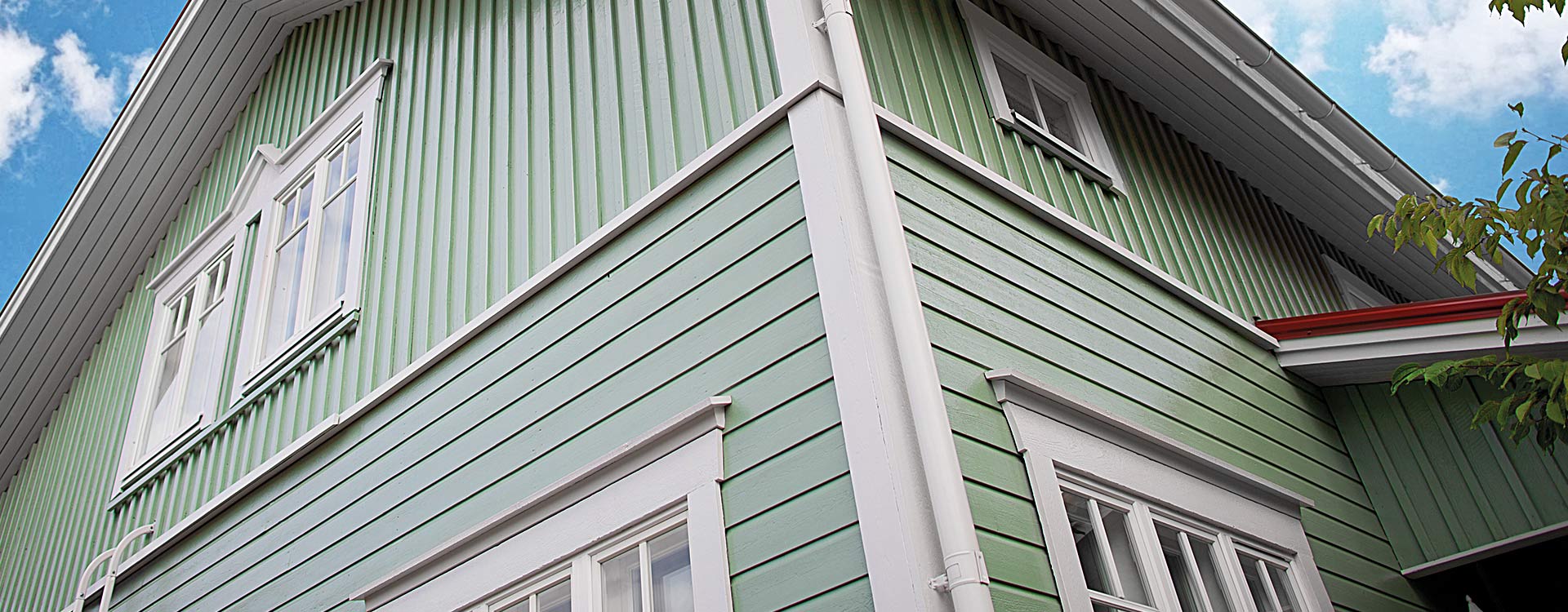House-painting season starts now – learn how to do it right!
In Finland, the ideal weather for exterior painting is between May 1st and Midsummer, so anyone who is planning to paint their house should get cracking! How can you find out what kind of paint has been used on a house? Can you wash a house using a pressure washer? Here are some tips for do-it-yourself painters.
Painting the exterior of a house should be done preferably in early rather than late summer, as the increased humidity in July and August hinders the paint’s drying process. The work should be tackled as soon as the temperature stays above 10 degrees Celsius for 24 hours.
The process begins by first analyzing the type of paint that was previously used on the house. You can tell whether oil paints or water-borne acrylate paints were used by inspecting the paint finish.
“In oil-based paints, the paint film is hard and adheres strongly to its base, but the finish will have small cracks that resemble the scales on a crocodile’s back. The finish of water-based paints, however, is very flexible. If you bend a piece of paint taken from the wall, it won’t break,” explains Petri Sirviö, Teknos’s technical adviser.
Red ochre paint based on linseed oil (“punamaali”) and other boiled paints are easy to recognize for their chalky finish. If you touch the matt finish, some color will transfer onto your fingers.
“Over the years the house may have been painted with many different types of paint, which makes it difficult to identify them. In such cases, the best thing to do is to use a water-borne paint, because it works well over any type of paint,” Sirviö points out.
First paint a test patch to make sure you have the right color.
Thorough prep work
In order to ensure that the painting goes smoothly and, above all, that the paint finish lasts a long time, thorough preparation work must be carried out. Many people are tempted to take short cuts in this labor-intensive and tedious stage. But carelessness will come back to haunt you in two years’ time, when the paint surface begins to peel off of the dirty wall underneath.
So before beginning the actual painting, remove any paint that is separating from the walls using a scraper or wire brush, and wash the walls with a cleaning agent intended for exterior walls. Use a mold and mildew remover to get rid of mold spots. Intact painted surfaces only need to be cleaned.
“A scrubbing brush with a handle should be used rather than a pressure washer, to avoid getting the structures too wet,” says Sirviö.
This stage is a good time to check the condition of the boards. If a dull knife sinks into a piece of the board, the board should be replaced with a new one.
Use a proper paintbrush
After the walls have been washed and dried, apply a coat of anti-mildew and -mold primer to the bare wood surfaces. Once these surfaces have dried, you can begin applying the actual finishing paint.
“It pays to use high-quality tools. A wide, thick paintbrush intended for exterior painting should be used to ensure that a sufficient amount of paint transfers to the board at a time.”
In addition, you shouldn’t even think about using ladders to do the job, but instead build proper scaffolding. You should also avoid painting in direct sunlight, as the paint will dry too quickly and the base will not harden.
“Begin early in the morning on the sunny side of the house, and in the course of the morning, work your way to the shady side,” Sirviö advises.
Facts: This is how to paint your house
- Find out what kind of paint was previously used on the house and select the right paint accordingly.
- First paint a test patch to make sure you have the right color.
- Thoroughly scrape or brush any loose paint and dirt off the walls.
- Wash the walls with a cleaner developed for exterior facades. Always apply the cleaner from the bottom up.
- Wash areas that contain mold or mildew with a cleaning agent intended for the purpose.
- Thoroughly rinse off the cleaning agents.
- Replace decayed wooden pieces with new ones.
- Properly prep and prime bare wood surfaces. Allow to dry for 1 to 3 days.
- Make that you have enough paint for 1 or 2 applications.
- Avoid painting in direct sunlight or in humid conditions.
